For the authorities that brought the Mountains to Sea National Greenway (山海圳國家綠道) into existence, the route is as much about culture as it is about hiking.
Han culture dominates the coastal and agricultural flatlands of Tainan and Chiayi counties, but as the Greenway climbs along its Tribal Trail (原鄉之路) section, hikers pass through communities inhabited by members of the Tsou Indigenous community.
Leaving Chiayi County’s Dapu Village (大埔), walkers follow Provincial Highway 3 to Dapu Bridge where a sign bearing the Tsou greeting “a veo veo yu” marks the point at which the Greenway turns off to follow Qingshan Industrial Road (青山產業道路) — and the point at which the balance of cultures tips towards primarily Indigenous.
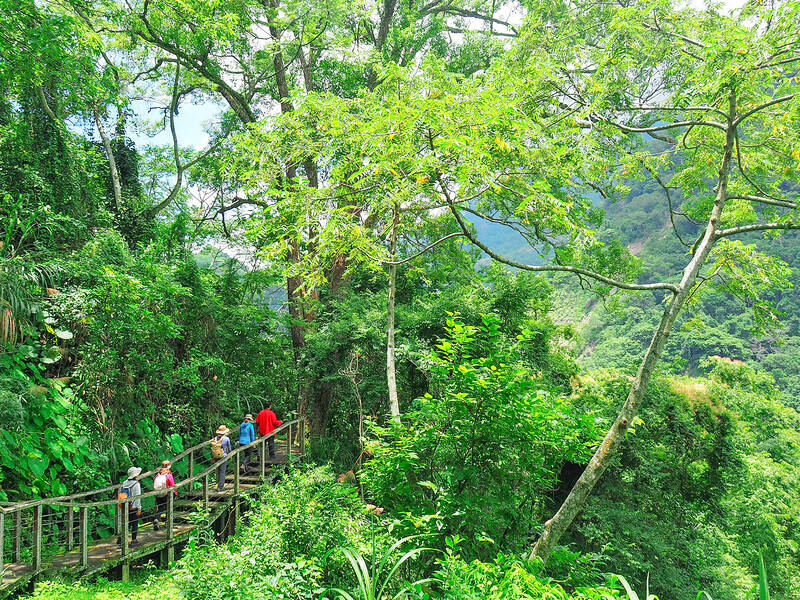
Photo: Ami Barnes
CAYAMAVANA’S PAVILIONS
A zigzagging climb brings hikers to Cayamavana (Chashan, 茶山). The village is unique among Taiwan’s indigenous settlements both for its ethnic diversity — Tsou individuals comprise the largest group here, but there are also Bunun and a scattering of Han villagers — and also for its extensive collection of pavilions.
Pavilions — more specifically thatched-roofed hufus — are scattered all around the village and are a big part of daily life.
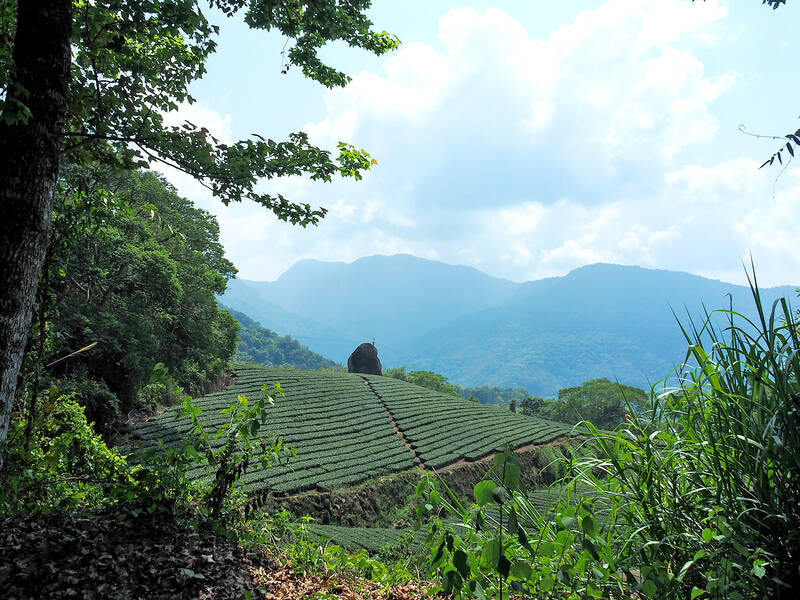
Photo: Ami Barnes
They are where the community gathers, chats and shares food — relics of a time when the community’s dead were buried below their living quarters, necessitating that noisy socializing activities be conducted away from the home.
Cayamavana is a good place to spend the night. Stopping here makes the Dapu-to-Cayamavana day short and the following day long, but Cayamavana has more places to stay than the next village — among them, Chashan Kaiyuan Farmstead (茶山開元農場) is a welcoming option — prices start at NT$1,200, bookable by calling (09) 3277-3883.
From Cayamavana, the Greenway follows Chiayi District Road 129 for about 17 kilometers, passing through Niahosa Village (Xinmei, 新美) about halfway along this leg.
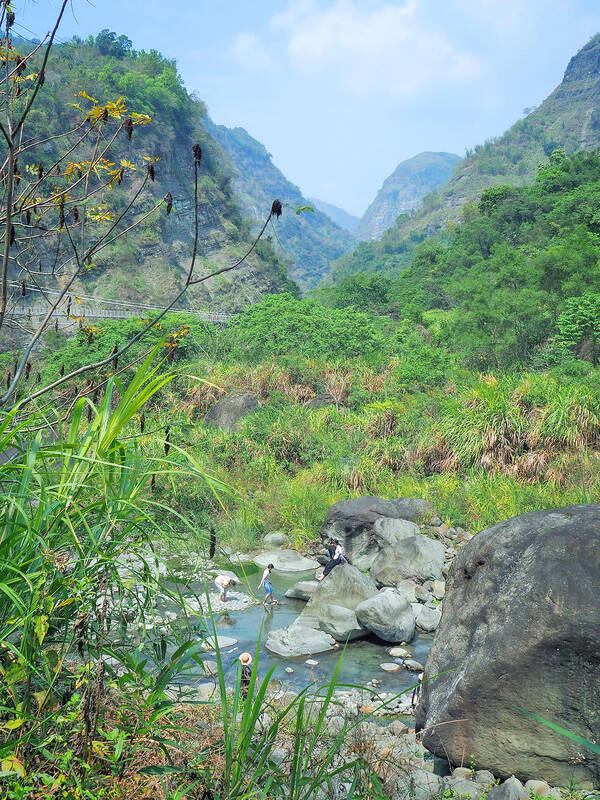
Photo: Ami Barnes
The village is relatively young, with most families having resettled there in the wake of World War II, although nearby archaeological excavations have revealed pottery, hunting paraphernalia and graves dating back around 3,800 years.
Niahosa feels a tad livelier than neighboring Cayamavana. It has a well-stocked convenience store, a coffee shop and some small eateries. There’s also an elementary school (at the latest count, populated entirely by Indigenous youths) and a couple of churches.
ECOLOGICAL PARK
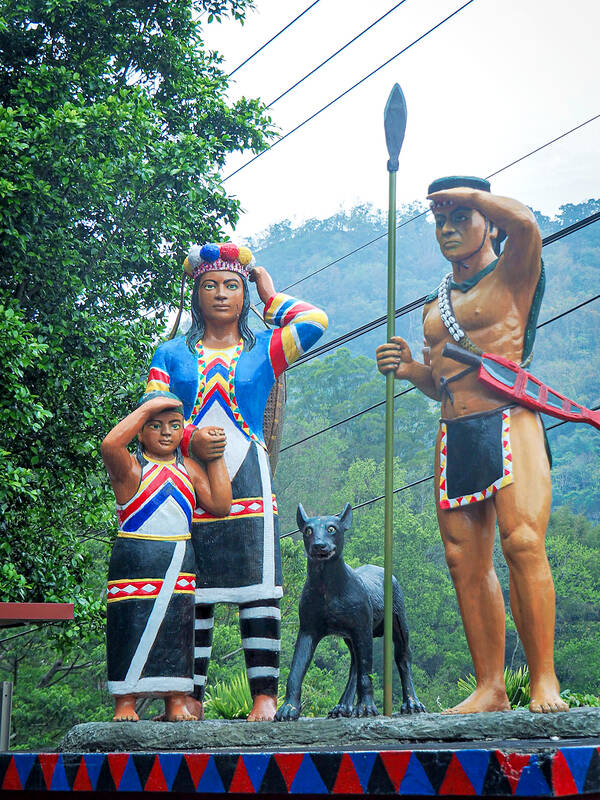
Photo: Ami Barnes
At Danayigu Nature Ecological Park (達娜伊谷自然生態公園), the Greenway finally parts ways with the road.
The route passes straight through the park and out the other side, meaning walkers must pay the entry fee (NT$150, discounted for Mountains to Sea Greenway trail passport holders).
Run by the Tsou peoples of Saviki (Shanmei Village, 山美) — it’s an example of collaborative efforts affecting real change.
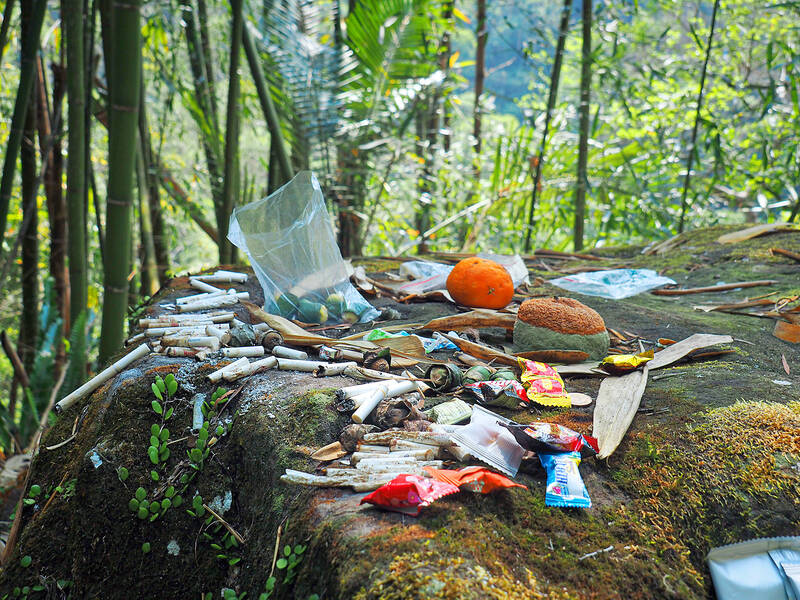
Photo: Ami Barnes
The Tsou traditionally practiced a combination of agriculture and hunting, with each family assigned an area of land comprising a stretch of riverbank and forest hunting grounds.
Ancestral lands sustained families for generations, but this system was thrown into disarray when post-World War II incomers brought destructive fishing practices such as electrofishing, stunning fish with electric currents.
It only took a couple of decades for the fish population to be all but eradicated, prompting villagers to take the drastic step of pooling their clans’ hunting grounds in order to preserve them.
The two waterways that run through the park — Zengwen River (曾文河) and Danayigu Creek (達娜伊谷溪) — were classified as shoveljaw carp conservation areas, and land to either side of the water became a hunting-prohibited nature reserve.
Fish fry from the creek’s headwaters were reintroduced to kickstart population recovery, and villagers organized patrols to ensure the new rules were followed. Within a short span, these efforts bore fruit — or rather, fish — and the cooperatively run park opened to visitors.
Passing through, hikers can visit the fish-viewing trail, learn about Tsou ways of life and refuel at stalls selling barbecued meats and local produce.
The Greenway leaves the park via an owl-adorned bridge before a lung-busting climb up Limei Refuge Trail (里美避難步道).
REMOTE NIAE’UCNA COMMUNITY
Before the Japanese colonial period, this was the primary route between Saviki and Niae’ucna (Lijia, 里佳). The Japanese constructed a new trail and this one fell into disuse until Typhoon Morakot wiped out sections of Niae’ucna’s only access road — prompting the old trail’s rebirth as an evacuation and supply route, then later a leisure trail.
Near the top, walkers can choose the slightly longer Giant Stone Slab Trail (巨石板步道) or crack on with the walk along Wuqiha Creek Industrial Road (烏奇哈溪產業道路) in search of rest in Niae’ucna — the through-hike’s most remote community.
Niae’ucna has a single homestay, Jiana Baiyi Workshop (嘉娜百藝工坊) and no official restaurant, but the homestay partners with villagers to offer hearty Indigenous-style feasts (advance booking required). Rooms are NT$2,400 per night, bookable by phoning (05) 251-1383.
Leaving the village, hikers pass Niae’ucna’s tribute stone stacked high with offerings for the locale’s guardian spirit, which appears to have a penchant for cigarettes and betel nuts.
The road is bounded by fields of tea and ginger and shaded by Formosa sweet gum trees, which — according to tribal lore — the Tsou are descended from.
Tapangu (Dabang, 達邦) and Tefya (Tefuye, 特富野) are the Greenway’s final two villages. Occupying parcels of flat land among an otherwise mountainous landscape, legend holds that the two villages sprang up in the footprints of Hamo — the Tsou creator god.
Tapangu is small and the sights densely packed. The Tsou Cultural Exhibition Hall (free to enter) sits between the school and its mountain-view running track.
West of the track, Tsou Fengguan Tribal Restaurant (鄒風館部落餐廳) serves up excellent Tsou cuisine, while at the eastern edge, a Japanese-era police dormitory serves as a reminder of the repression endured by Taiwan’s Indigenous communities.
Tapangu’s kuba — a ceremonial meeting place — is tucked between houses to the north of the running track, with thatched roofs capped with a living Dendrobium orchid and are where the community gathers for festivals. Tapangu and Tefya are the last of Taiwan’s communities with kubas.
A suspension bridge spans the river valley separating Tapangu from Tefya, and the trail on the far side ascends through creaking bamboo forests and towering camphor giants.
FARM-TO-TABLE COFFEE
Coffee growing has taken off in the region over the past decade, and as the trail approaches Tefya, it skirts several small coffee plantations and a handful of wayside cafes where the coffee must have one of the shortest farm-to-table journeys ever recorded — the plants are within literal striking distance of the tables.
The Tribal Trail continues a little further before segueing into the Greenway’s final portion — the Sacred Mountain Trail (聖山之路) — but since Tapangu and Tefya make an excellent point to break up the journey, it makes sense to pause the writing here too.

Taiwanese chip-making giant Taiwan Semiconductor Manufacturing Co (TSMC) plans to invest a whopping US$100 billion in the US, after US President Donald Trump threatened to slap tariffs on overseas-made chips. TSMC is the world’s biggest maker of the critical technology that has become the lifeblood of the global economy. This week’s announcement takes the total amount TSMC has pledged to invest in the US to US$165 billion, which the company says is the “largest single foreign direct investment in US history.” It follows Trump’s accusations that Taiwan stole the US chip industry and his threats to impose tariffs of up to 100 percent

On a hillside overlooking Taichung are the remains of a village that never was. Half-formed houses abandoned by investors are slowly succumbing to the elements. Empty, save for the occasional explorer. Taiwan is full of these places. Factories, malls, hospitals, amusement parks, breweries, housing — all facing an unplanned but inevitable obsolescence. Urbex, short for urban exploration, is the practice of exploring and often photographing abandoned and derelict buildings. Many urban explorers choose not to disclose the locations of the sites, as a way of preserving the structures and preventing vandalism or looting. For artist and professor at NTNU and Taipei

March 10 to March 16 Although it failed to become popular, March of the Black Cats (烏貓進行曲) was the first Taiwanese record to have “pop song” printed on the label. Released in March 1929 under Eagle Records, a subsidiary of the Japanese-owned Columbia Records, the Hoklo (commonly known as Taiwanese) lyrics followed the traditional seven characters per verse of Taiwanese opera, but the instrumentation was Western, performed by Eagle’s in-house orchestra. The singer was entertainer Chiu-chan (秋蟾). In fact, a cover of a Xiamen folk song by Chiu-chan released around the same time, Plum Widow Missing Her Husband (雪梅思君), enjoyed more

Last week Elbridge Colby, US President Donald Trump’s nominee for under secretary of defense for policy, a key advisory position, said in his Senate confirmation hearing that Taiwan defense spending should be 10 percent of GDP “at least something in that ballpark, really focused on their defense.” He added: “So we need to properly incentivize them.” Much commentary focused on the 10 percent figure, and rightly so. Colby is not wrong in one respect — Taiwan does need to spend more. But the steady escalation in the proportion of GDP from 3 percent to 5 percent to 10 percent that advocates